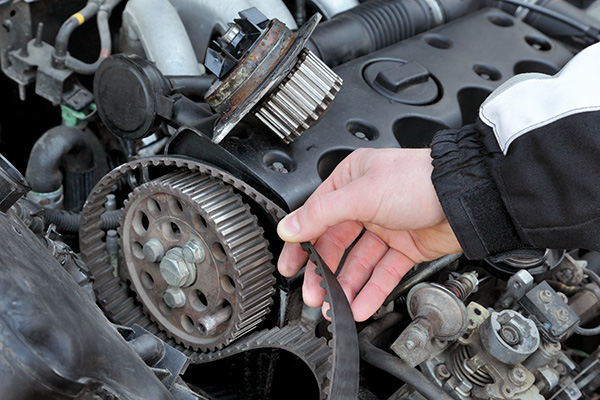
Your car's engine is a complex machine, with several components working together to generate power and keep the vehicle running. Among these essential parts is the timing belt or chain. But how does this crucial component work, and why is it so important to the engine’s performance?
1. What is the Timing Belt or Chain
The timing belt or chain plays a pivotal role in your car’s engine. It’s responsible for maintaining precise synchronization between the camshaft and crankshaft, ensuring that the engine’s valves open and close at the correct intervals. Without it, the engine’s internal components would be out of sync, causing major issues like misfires, poor fuel efficiency, or even total engine failure.
A timing belt is made of rubber with high-tensile fibers, while a timing chain is composed of metal links, similar to a bicycle chain. Both serve the same purpose, though chains tend to last longer than belts but may be noisier and heavier.
2. How Does the Timing Belt or Chain Work
So, how exactly does the timing belt or chain work? At its core, the timing belt or chain connects the camshaft and crankshaft, making sure they rotate in harmony. The crankshaft controls the pistons' movement, while the camshaft manages the opening and closing of the intake and exhaust valves. Timing is everything here; the belt or chain ensures that these components don’t collide and that the engine operates at peak performance.
The belt or chain also drives other key parts, like the water pump in some vehicles, contributing to the engine’s cooling system. The seamless coordination between the camshaft and crankshaft is what allows your engine to run smoothly, and any disruption can lead to serious problems.
3. Timing Belt vs. Timing Chain
Although both components serve the same function, there are notable differences between a timing belt and a timing chain.
- Material: Timing belts are made of reinforced rubber, while timing chains are metal.
- Durability: Timing chains typically last longer, sometimes even the lifespan of the car, whereas belts generally need to be replaced every 60,000 to 100,000 miles.
- Noise: Timing chains can be louder than belts, as metal clinks against metal during operation.
- Maintenance: Timing chains don’t need to be replaced as frequently but still require proper lubrication to prevent wear and tear. Timing belts, on the other hand, need regular replacement to avoid sudden failure.
Knowing which one your car has and understanding its maintenance needs is key to ensuring your vehicle stays in good running condition.
4. The Dangers of Failure
When the timing belt or chain fails, the synchronization between the camshaft and crankshaft is lost. This can lead to engine valves remaining open while pistons are moving, causing a collision between these internal components. The result? Bent valves, damaged pistons, or worse—complete engine failure.
In interference engines, the risk is even higher, as the valves and pistons occupy the same space in different parts of the cycle. A snapped belt or broken chain can lead to catastrophic damage, which may require an engine rebuild or replacement. Even in non-interference engines, where the pistons and valves don’t share the same space, a failed belt or chain will still render the car inoperable until repairs are made.
Maintaining Your Timing Belt or Chain
Regular maintenance is critical to avoid the nightmare of timing belt or chain failure. Timing belts have a specific lifespan and should be replaced based on your vehicle manufacturer’s recommendation, typically every 60,000 to 100,000 miles. Some warning signs that your timing belt may be failing include a ticking noise from the engine, engine misfires, or visible cracks on the belt.
Timing chains, on the other hand, are designed to last much longer but should still be inspected periodically for signs of wear, stretching, or improper tension. Failure to maintain a timing chain can result in costly engine damage, much like a failing belt.
Avoid costly engine repairs by staying proactive. Visit Olympic Transmissions & Auto Care for a timing belt or chain inspection and maintain your car’s optimal performance!